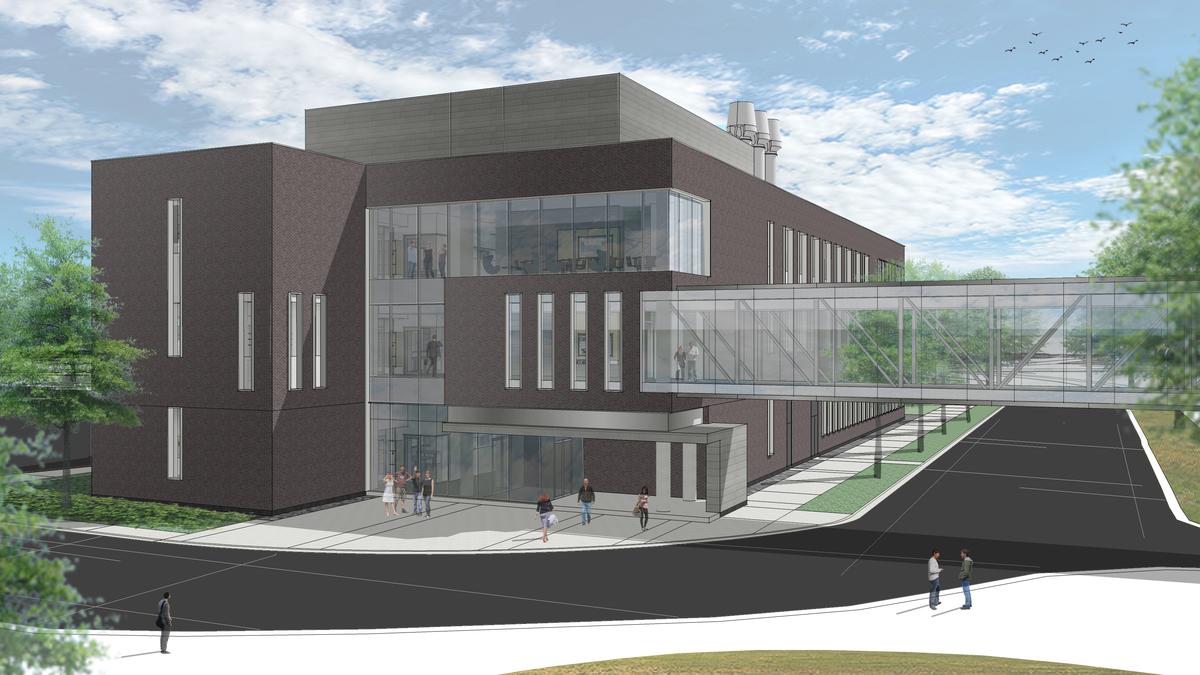University of Minnesota system leadership and UMD’s community partners are jumpstarting construction of the Chemistry and Advanced Materials Science (CAMS) building with a groundbreaking ceremony on Tuesday, July 11, 2017 at 11 a.m. The event takes at the future site of CAMS, the Maroon Lot B parking lot, across from the Darland Administration Building, 1049 University Drive.
University of Minnesota Board of Regents Chair David McMillan, University of Minnesota President Eric Kaler, UMD Chancellor Lendley C. Black, Representative Jen Schultz, and Representative Dean Urdahl are scheduled to speak from approximately 11 a.m. – 11:20 a.m. with the groundbreaking immediately following their remarks.
The groundbreaking will be celebrated with a luncheon at noon on the first floor of the Darland Administration Building.
On the Forefront of Research
When completed, CAMS will supplement the classes currently happening in the Chemistry Building, which was built in 1948 for 300 students. It's now serving more than 5,500 students a year.
Incoming Swenson College of Science and Engineering Dean Andrea Schokker says, in addition to adding space, CAMS will unleash new learning. “The CAMS building is an ideal example of a facility that provides modern space for state of the art training and research that’s so critical to our students’ education and our region's economy.”
During his tenure, outgoing Swenson College of Science and Engineering Dean Joshua Hamilton worked closely with BWBR Architects in the design of the CAMS building. He describes it as a science neighborhood.
“Traditionally science buildings are divided into spaces with the offices, classrooms, and labs separated by floors, and often the research labs being inaccessible to the students and public. We specifically designed a very different environment,” says Hamilton. “In the CAMS building, labs, classrooms, student spaces and faculty offices will share space on each floor.”
Hamilton says the finished building will have a lot of interior and exterior glass replacing traditional walls and doors to add to this transparency, as well as several collaborative learning spaces. “CAMS puts science on display. It’s a living laboratory.”
Creation Times Three
When Governor Mark Dayton approved a bonding bill that included funding for the building, three improvements to UMD were put in play:
The Swenson College of Science and Engineering gained space. Previously being maxed out on capacity forced programs to turn away qualified students. Through CAMS, the college is able to grow its enrollment.
The old Chemistry Building’s labs are being repurposed as active classrooms.
CAMS will have significantly updated and modernized chemistry labs as well as housing the newly-created Advanced Materials Center.
Advanced Materials Center
The Advanced Materials Center is designed to train students in the emerging field of materials science – 3D printing, microelectronics, and new materials. “It’s chemistry and engineering in an applied setting,” says Hamilton.
In conjunction with the new center, UMD is offering a new minor in materials science this fall. Plans for a master’s degree are also underway.
Hamilton explains that this learning is in response to a regional need, and it allows UMD to partner with several Minnesota companies; Cirrus Aircraft is using bonding materials, pipeline companies need liners that resist corrosion and restrict friction, AMSOIL is designing synthetic lubricants, and Marvin Windows is using the technology to build windows out of new materials with longer lives.
Another business that’s using advanced materials is Tundra companies. Its founders, Kurt and Beth Heikkila, donated the money that made UMD’s Advanced Materials Center possible.
Their Tundra Composite Division creates composites used in the construction industry and in consumer products.
One of their leading innovations is a tungsten based composite that’s used to balance automobile wheels as a replacement for lead weights. The wheel balancing technology is being marketed through 3M and is rapidly replacing lead weights in automobiles.
Tundra worked on this in collaboration with UMD faculty member Robert Carlson, who will be the Advanced Materials Center’s inaugural director.
Funding
UMD initially made request for CAMS funding in 2016, but the Legislature didn't pass any bonding bills during that session.
It was the University of Minnesota system's top building priority. This May, Governor Mark Dayton approved a bonding bill that included $28.3 million for CAMS.
In addition to the state money, the University of Minnesota is seeking private funding for the remaining project cost of $14.1 million.
Construction is expected to begin on July 17 and take almost two years.
